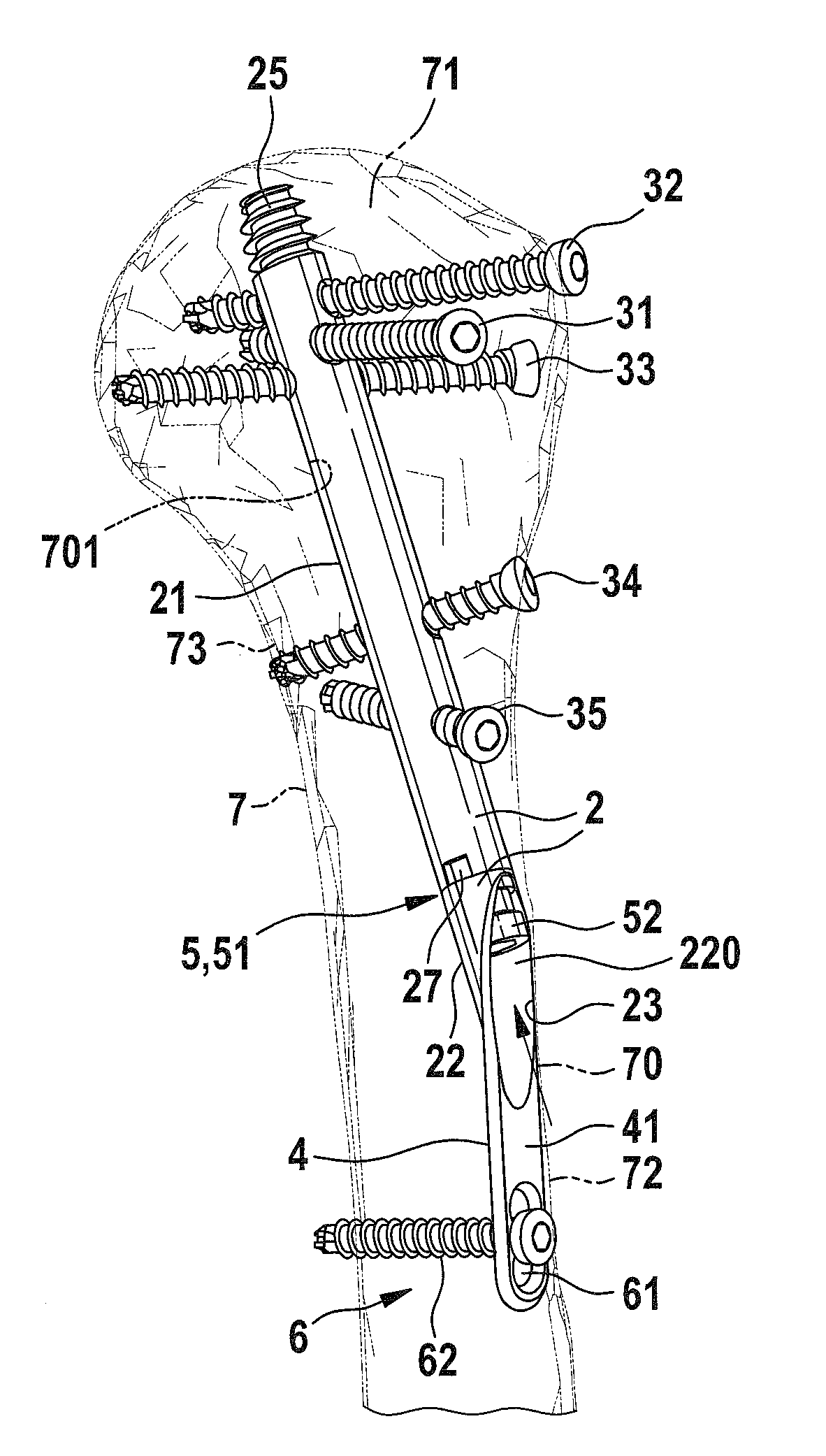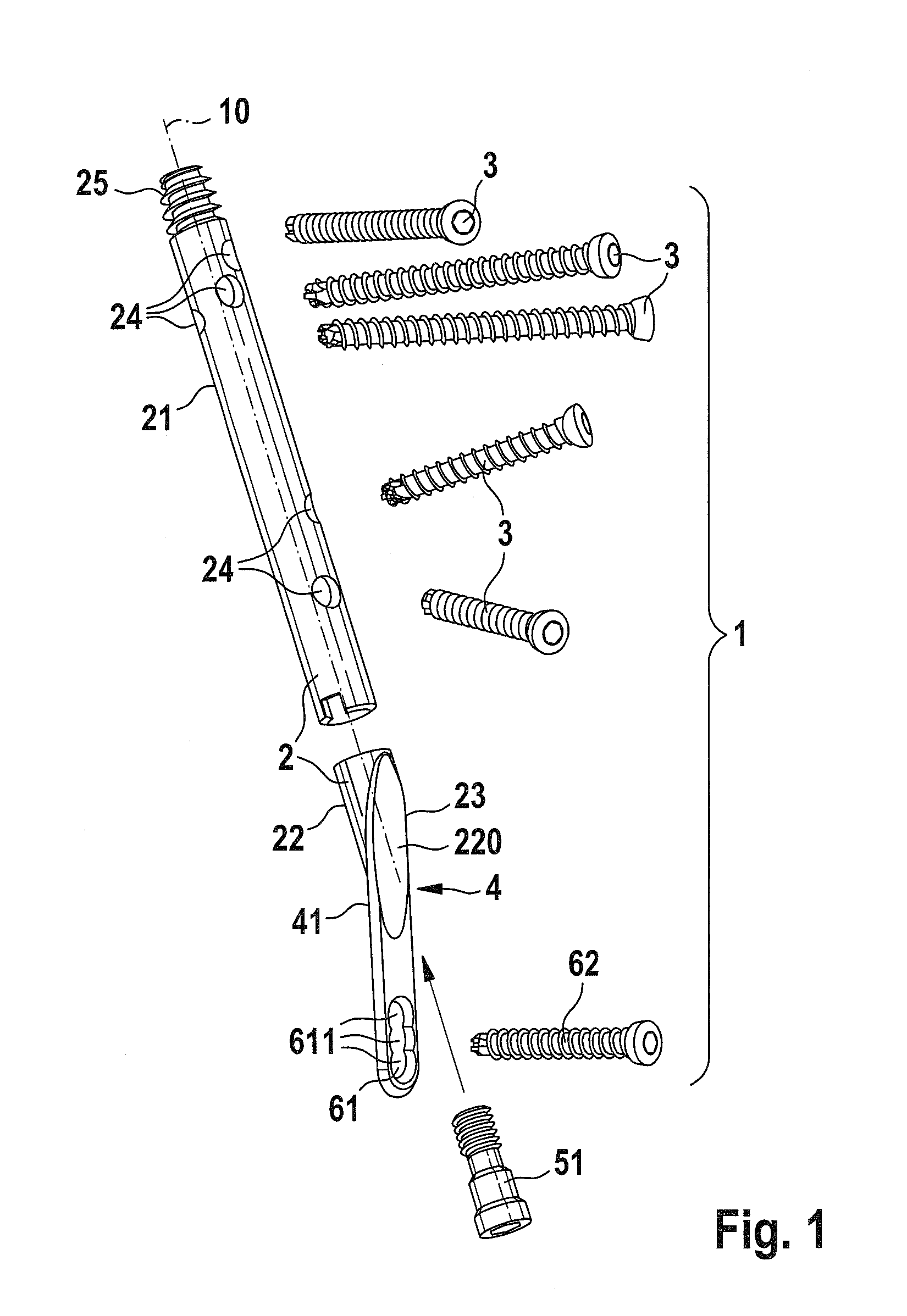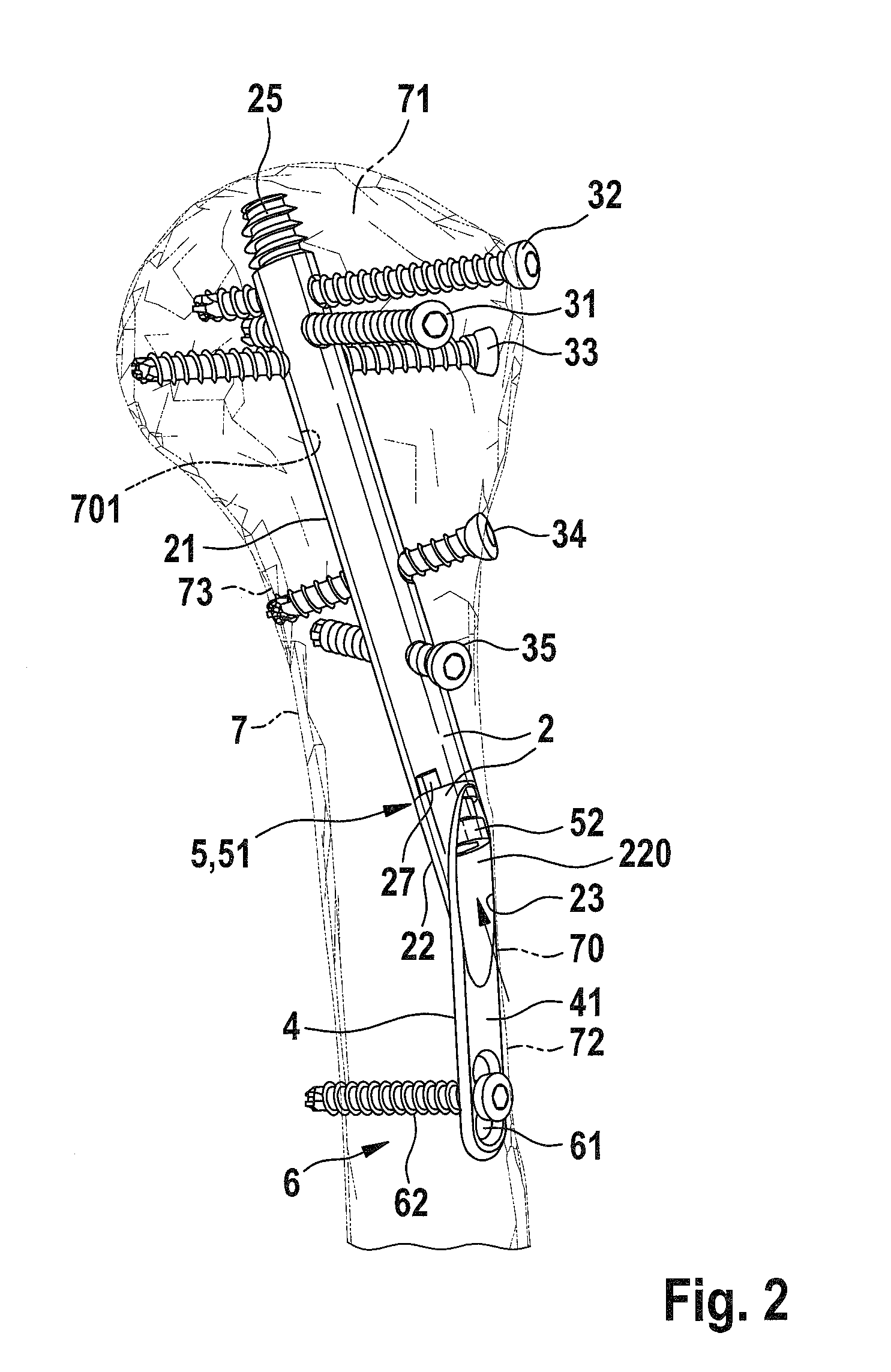Short pin for taking care of epiphysis fractures
a short nail and epiphysis technology, applied in the field of short nails, can solve the problems of insufficient fixation elements in the surgical neck in some applications, particularly invasive surgical techniques, etc., and achieve the effect of simple anchoring of the diaphyseal anchor
- Summary
- Abstract
- Description
- Claims
- Application Information
AI Technical Summary
Benefits of technology
Problems solved by technology
Method used
Image
Examples
Embodiment Construction
[0023]The short nail 1 shown in the practical example is designed as an implant for subcapital and pertubercular fractures of the humerus 7. The short nail 1 is particularly suitable for the above-mentioned fractures of the humerus. Generally, the short nail according to the invention with adapted dimensions and design is particularly suitable for treating multiple-fragment fractures of the epiphyses of long bones, such as for example femur, tibia, fibula, radius and ulna. But the short nail designed according to the invention can also be used for other bones with fractures close to the joint, for example for fractures of the calcaneus.
[0024]FIG. 2 shows the position, structure and assembly of the short nail 1 implanted in the humerus 7. Fracture lines are not shown in more detail in the head 71 of the humerus (epiphysis of the humerus). Individual components of the short nail 1 can be seen from FIG. 1. The short nail 1 has a supporting body 2, fixation pins 3, a diaphyseal anchor 4...
PUM
 Login to View More
Login to View More Abstract
Description
Claims
Application Information
 Login to View More
Login to View More - R&D
- Intellectual Property
- Life Sciences
- Materials
- Tech Scout
- Unparalleled Data Quality
- Higher Quality Content
- 60% Fewer Hallucinations
Browse by: Latest US Patents, China's latest patents, Technical Efficacy Thesaurus, Application Domain, Technology Topic, Popular Technical Reports.
© 2025 PatSnap. All rights reserved.Legal|Privacy policy|Modern Slavery Act Transparency Statement|Sitemap|About US| Contact US: help@patsnap.com



